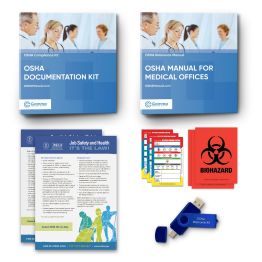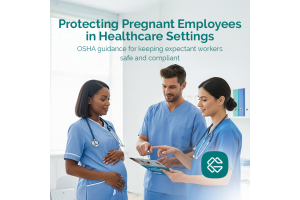Choosing the Right OSHA Occupational Health Provider
If you're responsible for workplace safety and compliance, one critical step is having an OSHA-compliant occupational health provider lined up. But when it comes to selecting a local clinic, is it enough to simply pick one and move forward? Not quite.
Choosing the right occupational health provider requires careful planning to meet OSHA standards and ensure your employees receive the right care when needed. Here’s a step-by-step guide on what to consider when choosing a provider for your business locations.
1. Confirm Service Capabilities
First, make sure the clinic can perform all OSHA-required services for your workplace needs. Common examples include:
- Post-exposure medical evaluations for Bloodborne Pathogens (29 CFR 1910.1030)
- Respirator medical evaluations and clearances (29 CFR 1910.134)
- Return-to-work exams, injury management, and drug testing if necessary
Ensure the clinic is capable of delivering the specific occupational health services that apply to your industry.
2. Ensure Immediate Availability
Post-exposure evaluations, such as for bloodborne pathogen exposures, must be "immediately available" to employees. (29 CFR 1910.1030(f)(3))
Confirm that the clinic can respond quickly for urgent needs, not just during normal business hours.
3. Prioritize Confidential Medical Recordkeeping
OSHA requires that employee medical records are maintained confidentially and retained for the duration of employment plus 30 years. (29 CFR 1910.1020)
Vet the provider to ensure they understand and comply with these recordkeeping rules.
4. Understand Cost Responsibilities
Employers must provide all OSHA-required medical services at no cost to the employee. (29 CFR 1910.1030(f)(1)(ii)(A) and 29 CFR 1910.134(e))
Discuss billing and service costs with the provider in advance to avoid confusion.
5. Document the Provider Selection
While OSHA does not mandate a written contract, it’s best practice to document your clinic selection and expectations in writing. This should outline:
- Provided services
- Response timelines
- Recordkeeping procedures
Good documentation helps ensure readiness for potential OSHA inspections.
6. Train Supervisors and Staff
Make sure that supervisors and managers understand the process for referring employees to the designated occupational health provider. Training ensures smooth and compliant handling of workplace injuries and exposures. (General Duty Clause, Section 5(a)(1) of the OSH Act)
Final Thoughts
Choosing an occupational health provider isn’t just a checkbox—it’s a vital part of maintaining a safe, OSHA-compliant workplace. Take time to evaluate, vet, and properly document your clinic selections so you’re ready for whatever comes your way.









